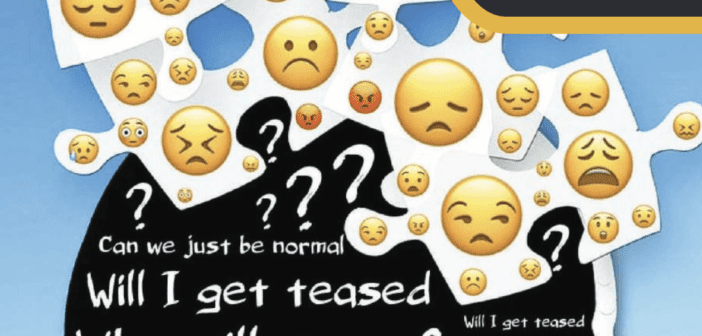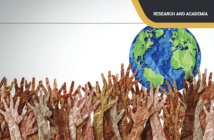By Joan Ogeto
Our Silent Architects
In the domains of philosophy, psychology, cognitive science, and the emerging field of neuroplasticity, there exists a widely accepted consensus regarding the intricate nature of the human mind, particularly with respect to the existence of the subconscious. This concept has deep historical roots, dating back to profound philosophical musings by thinkers like Leibniz. It gained significant prominence as a philosophical doctrine through Eduard von Hartmann’s thought-provoking treatise, “Die Philosophie des Unbewussten,” composed in the mid-19th century. Von Hartmann’s work stands out for its comprehensive exploration of the unconscious mind and its profound influence on human actions, thoughts, and emotions. Over time, an increasing number of scholars in these fields have delved deeper into the fascinating workings of the human mind. Dr. Joe Dispenza, a contemporary science writer, is one of the few individuals in this domain with a profound understanding of the pivotal role that emotions play in the process of personal transformation. This exploration has led to the notion that a significant portion of human behavior, both mental and physical processes, is shaped by our beliefs, whether or not, we are conscious of this. In the upcoming sections, we will delve deeper into the profound implications of these insights, shedding light on how our beliefs not only shape our reality, but also hold the transformative power to reshape our lives. Throughout this journey, we’ll navigate our exploration by drawing from real-life examples as guiding beacons.
For millennia, the phenomenon of our minds convincing our bodies that a placebo is a genuine treatment, leading to healing, has remained a remarkable and enduring mystery. By seamlessly integrating scientific findings with thought-provoking perspectives, we extend our understanding beyond conventional limits, pushing the boundaries of what we know. The compelling outcome of this collective exploration unveils a profound revelation: every individual, including you, holds immense influence over their own brain and body. This influence is wielded through the thoughts nurtured, emotions experienced, intentions embraced, and transcendental states encountered. Together, these elements weave the tapestry of human potential and personal transformation.
The Remarkable Story of Henry Beecher and Placebos
During World War II, American surgeon Henry Beecher, facing a shortage of morphine in military field hospitals, encountered a remarkable situation. With a wounded soldier about to undergo surgery and the fear of cardiovascular shock without pain relief, a nurse swiftly injected the soldier with saline, mimicking a morphine injection. Astonishingly, the soldier’s distress subsided, as though he had received actual morphine, despite the injection containing only saltwater. Beecher conducted the operation without anesthesia, and the soldier experienced minimal pain and no shock, leaving Beecher intrigued by the power of placebos. .
Beecher repeated this saline injection approach whenever morphine supplies ran low, reinforcing his belief in placebos. Upon returning to the United States after the war, he delved into studying this phenomenon. In 1955, Beecher authored a groundbreaking clinical review published by the Journal of the American Medical Association. It not only highlighted the substantial significance of placebos but also advocated for a new approach in medical research known as randomized, controlled trials. These trials aimed to distinguish between subjects receiving active medications and those receiving placebos, thus preventing the potent placebo effect from skewing research outcomes. The notion that our thoughts, beliefs, and expectations alone can influence physical reality, whether consciously or not, has a history predating the World War II field hospital incident.
The Enigmatic Case of Mr. Wright and Krebiozen
In 1957, a UCLA psychologist named Bruno Klopfer told the story of a man known as “Mr. Wright.” Mr. Wright had advanced lymphoma, a form of cancer that didn’t respond to traditional treatments. He was in a dire condition with large tumors in his neck, groin, and armpits. His doctor had given up hope, but Mr. Wright was determined to find a solution. Mr. Wright learned about an experimental drug called Krebiozen being evaluated at the hospital where he was treated. He convinced his doctor to give him the new remedy, even though he didn’t meet the trial requirements. After receiving an injection of Krebiozen, his tumors miraculously shrank, and he quickly recovered. However, when news broke that Krebiozen was ineffective, Mr. Wright’s tumors returned as he lost hope.
To test a theory, his doctor informed him that a new and improved version of Krebiozen was on its way. Mr. Wright believed it and received another injection, which, unknown to him, contained only distilled water. Astonishingly, his tumors disappeared again, and he enjoyed a few more months of good health. It was later revealed that Krebiozen had no actual medicinal value, and the initial improvement was likely a result of the placebo effect. The story underscores the remarkable impact of belief and positive expectations on health outcomes. The “miracle drug” Krebiozen was eventually exposed as a hoax, being nothing more than mineral oil with a basic amino acid. When Mr. Wright learned of this, he relapsed, losing hope in his recovery, and returned to the hospital. He passed away two days later. The story raises intriguing questions: Did Mr. Wright’s belief in the drug lead to his body temporarily being cancer-free not once, but twice, in just a matter of days? Could his mental state have triggered a physical response, ultimately affecting his health?
The Belief-Induced Rash
In the 1960s, scientists introduced the term “nocebo,” which means “I shall harm” in Latin. This term is used to describe when an inert substance causes harmful effects simply because someone believes or expects it to. The nocebo effect is commonly observed in drug studies when individuals taking placebos anticipate experiencing side effects associated with the tested drug. It also occurs when subjects are warned about potential side effects, leading them to attribute any discomfort or symptoms to the drug, even though they haven’t actually taken it. Limited ethical considerations have restricted research on this phenomenon, but a few studies have delved into it.
An illustrative example is a 1962 study in Japan involving highly allergic children who were exposed to poison ivy. Researchers rubbed one forearm of each child with poison ivy but falsely claimed it was harmless, while they rubbed the other forearm with a genuinely harmless leaf but told the children it was poison ivy. Surprisingly, all the children developed a rash on the arm rubbed with the leaf they believed was poison ivy, and 11 out of the 13 children experienced no rash where they had direct contact with the actual poison ivy. This demonstrates the powerful impact of belief and expectation on physical reactions.
The Bruce Moseley Study
In 1996, orthopedic surgeon Bruce Moseley conducted a study involving ten volunteers, all military veterans suffering from knee osteoarthritis. Many of these individuals had severe conditions, requiring assistance to move due to noticeable limps or the use of canes. The study aimed to investigate arthroscopic surgery, a common procedure involving the insertion of a fiber-optic instrument to examine the joint, followed by the removal of degenerated cartilage fragments causing inflammation and pain. At the time, this surgery was performed on about three-quarters of a million patients annually. In the study, two participants received standard debridement surgery, three underwent lavage procedures, and five received sham surgery, involving only an incision without any actual medical intervention.
Surprisingly, all ten patients reported improved mobility and reduced pain after the surgery. Strikingly, those who had received the “pretend” surgery fared equally well as those who had undergone debridement or lavage surgery. This similarity in results persisted even six months later. Six years after the study, two of the individuals who had received the placebo surgery reported continued pain-free walking and increased range of motion. They regained the ability to perform everyday activities they had struggled with before the surgery. This study highlighted the remarkable influence of belief and perception on physical outcomes, demonstrating how the power of the mind can positively impact health and well-being.
Then there are the displays of extreme strength in emergency situations, known as “hysterical strength.” In April 2013, for example, 16- year-old Hannah Smith and her 14-year-old sister, Haylee, of Lebanon, Oregon, lifted a 3,000-pound tractor to free their father, Jeff Smith, who was trapped underneath.
In essence, the human capacity for reshaping thought patterns, beliefs, and behaviors extends to the profound reconfiguration of our brains. By actively embracing more positive and constructive thoughts, individuals forge novel neural pathways that contribute to enhanced mental, physical, and emotional well-being. The well-documented link between emotional states, beliefs, and overall health stands as a testament to this profound connection. Furthermore, scientific evidence underscores that under specific circumstances, placebos can rival traditional treatments in their effectiveness, highlighting the potent role of belief in healing. In the grand tapestry of our lives, everything becomes a canvas of boundless potential, akin to malleable clay that responds to our choices, guided by our beliefs, as we shape possibilities into our lived reality.
References
A. Kirkley, T. B. Birmingham, R. B. Litchfield, et al., (2008) “A Randomized Trial of Arthroscopic Surgery for Osteoarthritis of the Knee,” New England Journal of Medicine, vol. 359, no. 11: pp. 1097–1107.
J. B. Moseley, Jr., K. O’Malley, N. J. Petersen, et al., (2002) “A Controlled Trial of Arthroscopic Surgery for Osteoarthritis of the Knee,” New England Journal of Medicine, vol. 347, no. 2: pp. 81–88.
K. Dolak, (2013) “Teen Daughters Lift 3,000-Pound Tractor Off Dad,” ABC News, http://abcnews.go.com/blogs/headlines/2013/04/teen-daughterslift-3000-pound-tractor-off-dad.
H. K. Beecher, (1955) “The Powerful Placebo,”Journal of the American Medical Association, vol. 159, no. 17: pp. 1602–1606.
Y. Ikemi and S. Nakagawa, (1962) “A Psychosomatic Study of Contagious Dermatitis,” Kyoshu Journal of Medical Science, vol. 13: pp. 335–350.
The writer is a lawyer.



